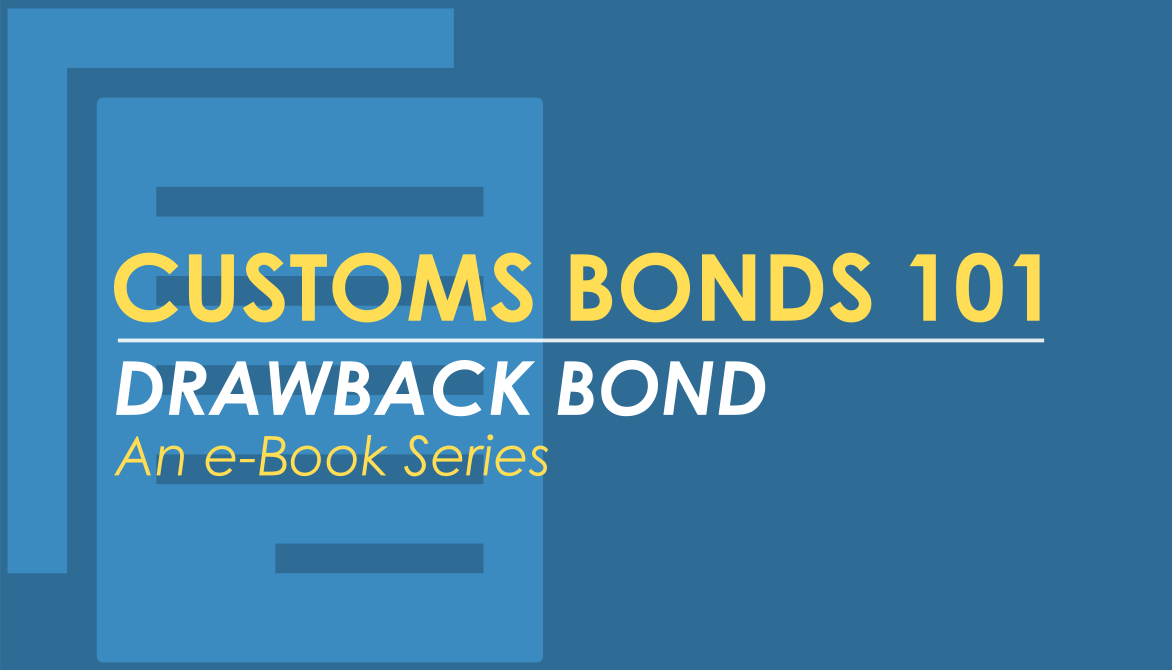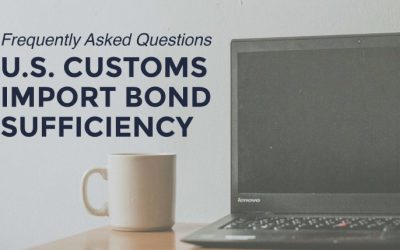As part of the Customs Bonds 101 e-Book series, learn the basics of Drawback Bond, and determine if you need one.
What is a Drawback Bond?
A Drawback Bond is a U.S. Customs bond filed under code C1A which allows an importer to obtain a refund of 99% of the duties paid on their imported commodities. To be eligible for a refund an importer must provide proof the goods were exported out of the U.S. or were destroyed, after entering the country. This bond size is calculated by totaling the average of all estimated drawback claims within a 12 month period, and the minimum bond size is $5,000.
What is the difference between a temporary import and a drawback bond?
- Temporary Import – this type of import occurs when a company uses the United States as a connection point for the final destination of a shipment of goods. If an importer’s goods are shipped from China to a U.S. port and are then immediately shipped up to Canada via Rail, the standard C1 customs bond with the Temporary Import under Bond addition would be required. Typically, temporary imports must leave within a specific amount of time after reaching U.S. soil, as Customs thoroughly documents these practices.
- Drawback bond – these bonds are specifically designed to allow some goods to enter the U.S. and then partially or fully be reshipped elsewhere. For example, if an importer brings in a container full of clothing then they ship it into their warehouse to be repackaged and sent elsewhere in the world, they would need a drawback bond. Customs will honor a 99.9% duty/fee forgiveness for goods that leave the U.S. in this manner.
Now that you know more about how a Drawback bond works, evaluate your importing practices and determine if you need one. As always, we at TRG are proud to be your importing bond experts. Thanks for reading this post about the Drawback Bond.






![[Webinar] How Could Changes to De Minimis Impact Your Company?](https://traderiskguaranty.com/trgpeak/wp-content/uploads/2025/05/trg-how-de-minimis-impacts-customs-bond-webinar-400x250.png)
